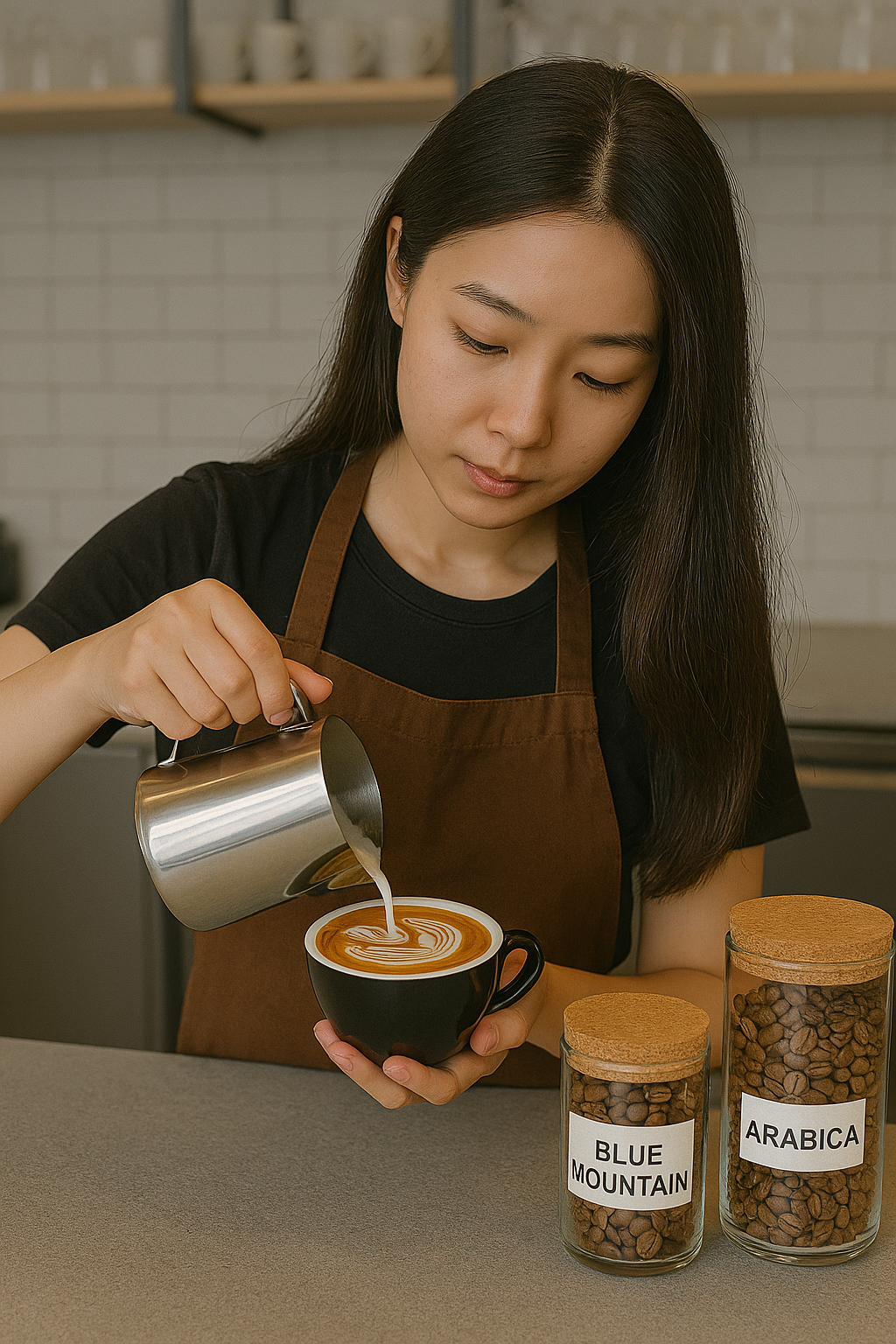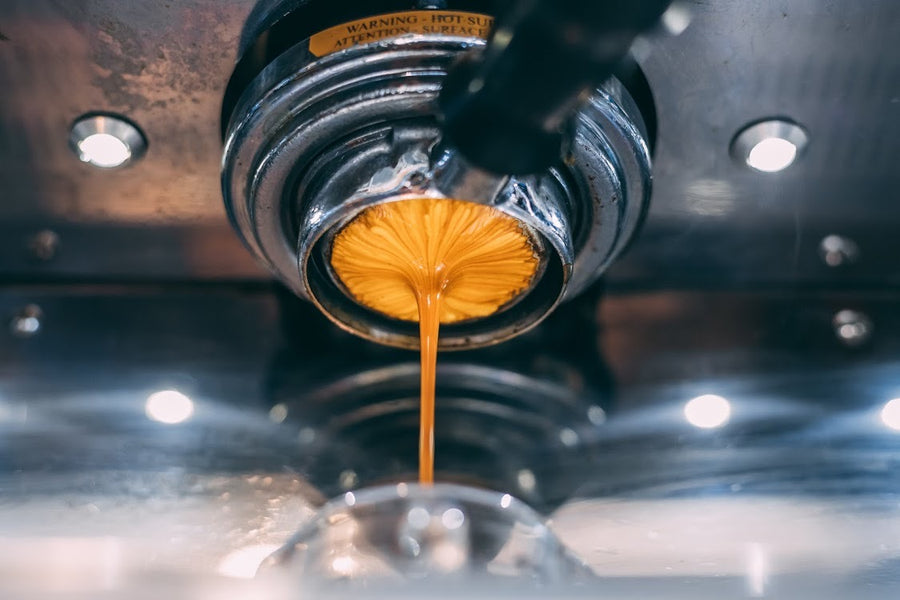Where to copyright SOE Single Origin Espresso Online
Wiki Article
Discovering the Abundant Tastes of Coffee Beans: a Deep Study Coffee and Blended Coffee Beans
When you discover the rich flavors of coffee beans, you reveal a complicated globe where each variety brings its own character to your cup. As you navigate through the art of coffee and the creative thinking behind combined coffees, you'll start to value the subtleties that make each sip distinct.The Origins of Coffee Beans: Discovering Terroir and Flavor Profiles
When you take a sip of coffee, you're not just delighting in a beverage; you're experiencing a rich tapestry of tastes shaped by the beans' origins. Each area produces special taste accounts affected by soil, altitude, and climate. Beans from Ethiopia usually rupture with intense, fruity notes, while those from Colombia often tend to offer a balanced, nutty sweet taste.As you discover various beginnings, you'll observe exactly how terroir-- the environmental variables influencing a plant-- plays an essential duty - Single Origin Espresso. The very same coffee range can taste significantly different relying on where it's grown
When you take into consideration these factors, you begin to value the intricacy behind your cup. Each sip tells a tale of the land and the farmers who supported the beans. So, next time you delight, believe concerning the trip your coffee took before it reached your hands, and savor those elaborate flavors that reflect its beginning.
Recognizing Espresso: The Art and Science Behind the Brew
When you think of espresso, it's not practically the strong taste; it's additionally concerning the techniques that bring it to life. Comprehending how various prep work methods influence taste can change your developing experience. Allow's discover the details of espresso preparation and discover the distinct taste profiles that make each mug special.Coffee Prep Work Methods
Coffee preparation is both an art and a scientific research, combining accurate techniques with a deep understanding of coffee. To start, you'll intend to select top notch, fresh roasted beans and grind them carefully for optimal removal (Single Origin Espresso). The grind size is vital; also rugged, and your espresso will certainly be weak, too great, and it'll be bitterNext, tamp the premises uniformly in the portafilter to assure uniform extraction. When you lock it right into the equipment, go for a developing temperature in between 190 ° F and 205 ° F.As you pull the shot, expect the excellent extraction time-- around 25-30 secs. The result must be an abundant, creamy espresso with a beautiful layer of crema on top. With practice, you'll understand these strategies.
Taste Profiles Clarified
The world of coffee uses a rich tapestry of taste accounts that can elevate your coffee experience. Light roasts usually display bright level of acidity and vibrant flavors, while dark roasts existing much deeper, bolder tones.Recognizing these accounts helps you pick the ideal espresso for your taste buds. Try out different blends can reveal shocking combinations. A well-crafted blend might harmonize the intense notes of an Ethiopian bean with the abundant, chocolatey touches of a Brazilian bean. Welcome the journey of uncovering coffee's varied tastes, and you'll change your coffee routine right into an interesting journey.
Handling Methods: How They Impact Taste and Aroma
While it may seem that the beginning of coffee beans is the most significant consider determining their flavor and aroma, the processing approaches used post-harvest play a just as essential role. You'll locate that these methods can dramatically alter the last preference account of your cup.For instance, the washed process removes the fruit from the beans prior to fermentation, usually leading to a cleaner, brighter flavor. The all-natural process leaves the fruit undamaged during drying out, resulting in a sweeter, fruitier profile.
Various other techniques, like honey handling, strike an equilibrium, permitting some fruit mucilage to continue to be, providing an one-of-a-kind intricacy.
Each processing method connects with the beans' integral features, boosting or muting details flavors and aromas. So, when you drink that coffee or combined coffee, bear in mind that the trip from cherry to mug is affected not just by beginning however also by just how those beans were refined.
Roasting Strategies: Unlocking the Complete Possible of Coffee Beans
Roasting techniques are important for exposing the full potential of coffee beans, as they transform raw, green beans into the fragrant, flavorful coffee you take pleasure in. The selection of roasting approach-- light, Single Origin Espresso tool, or dark-- drastically affects flavor profiles. Light roasts preserve the beans' all-natural level of acidity and fruity notes, while tool roasts balance sweet taste and richness. Dark roasts, on the various other hand, emphasize vibrant, smoky flavors.A slower roast at reduced temperature levels permits for complex tastes to develop, while a quicker roast can heighten bitterness. By mastering these techniques, you'll expose a globe of taste, raising your coffee experience to new elevations.
The Magic of Blended Coffee: Developing Distinct Flavor Experiences
Producing a special taste experience with combined coffee can transform your early morning ritual into an exploration of preference. By integrating various beans from numerous areas, you can disclose a harmony of flavors that elevate your cup to new heights. Each mix deals an unique account, stabilizing body, level of acidity, and sweet taste to produce something genuinely unique.When you pick a mix, you're not just selecting a coffee; you're choosing a journey across varied landscapes and societies. Try out different combinations enables you to uncover your individual faves, whether you take pleasure in fruity notes or abundant, chocolatey touches.

Sampling Notes: Recognizing the Nuances in Your Mug
As you sip your coffee, you might notice a range of tastes dancing on your taste, each revealing the details of the beans. You may taste the intense acidity similar to citrus or the deep, rich notes similar to dark chocolate. The sweetness could evoke honey or caramel, balancing the general account wonderfully.Take notice of the body of the coffee-- does it feel light and airy, or is it full and creamy? The surface, as well, provides clues; a lingering aftertaste might mean nuttiness or flower undertones.

Don't fail to remember to check out the special attributes of various origins, as each region presents distinct tastes - Single Origin Espresso. For circumstances, Ethiopian coffees usually existing fruity notes, while Colombian beans could display an extra rounded sweetness. By identifying these nuances, you'll strengthen your recognition for every cup, boosting your coffee experience to brand-new heights

Brewing Techniques: Making The Most Of Flavor Extraction for each Bean
When you check out the numerous developing techniques, you'll find that each strategy can considerably affect the flavor profile of your coffee. From French press to pour-over, each technique extracts different compounds, boosting or muting certain notes. For example, using a French press allows oils to remain in the brew, creating a richer preference, while pour-over stresses clarity and illumination.Temperature and grind dimension also play necessary duties. A coarser work functions best for chilly mixtures, while a great grind is optimal for coffee. Trying out water temperature level-- between 195 ° F and 205 ° F-- can reveal surprise tastes, also.
Do not fail to remember regarding steeping time; a fast extraction can result in sour notes, while over-extraction may yield resentment. By adjusting these variables, you can make best use of taste extraction and truly raise your coffee experience. Enjoy the trip of finding what approach best matches your palate!
Often Asked Concerns
What Is the Perfect Water Temperature for Brewing Coffee?
The ideal water temperature for developing coffee's between 195 ° F and 205 ° F. If you make use of water that's too hot, you'll over-extract tastes; as well cool, and you won't draw out enough. Objective for that wonderful area for the ideal brew!How Does Grind Dimension Impact Coffee Taste?
Work size substantially influences coffee taste. Finer grinds essence extra tastes and oils, leading to a bolder taste, while coarser grinds return a lighter taste. Adjusting work size aids you attain your wanted coffee profile.Exist Health Conveniences Linked With Drinking Coffee?
:max_bytes(150000):strip_icc()/__opt__aboutcom__coeus__resources__content_migration__serious_eats__drinks.seriouseats.com__images__20110830-espresso-main-248fa93e7b7644e3baabac416fd2579c.jpg)
What Is the Difference In Between Arabica and Robusta Beans?
Arabica beans are smoother and sweeter, often including fruity tastes, while robusta beans are stronger with a bitter taste and greater caffeine web content. You'll discover these distinctions in fragrance and developing experience.Exactly How Can I Shop Coffee Beans for Freshness?
To keep coffee beans for quality, keep them in a closed container, far from heat, wetness, and light. You'll preserve their taste much longer if you only grind what you need right prior to brewing.Discovering the Rich Tastes of Coffee Beans: a Deep Dive Into Espresso and Blended Coffee Beans.
When you explore the abundant tastes of coffee beans, you reveal an intricate world where each variety brings its own character to your mug.When you take a sip of coffee, you're not just enjoying a drink; you're experiencing an abundant tapestry of flavors shaped by the beans' beginnings.Roasting techniques are important for disclosing the complete capacity of coffee beans, as they change raw, green beans into the fragrant, savory coffee you delight in.As you drink your coffee, you might observe a range of flavors dancing on your taste, each disclosing the ins and outs of the beans.
Report this wiki page